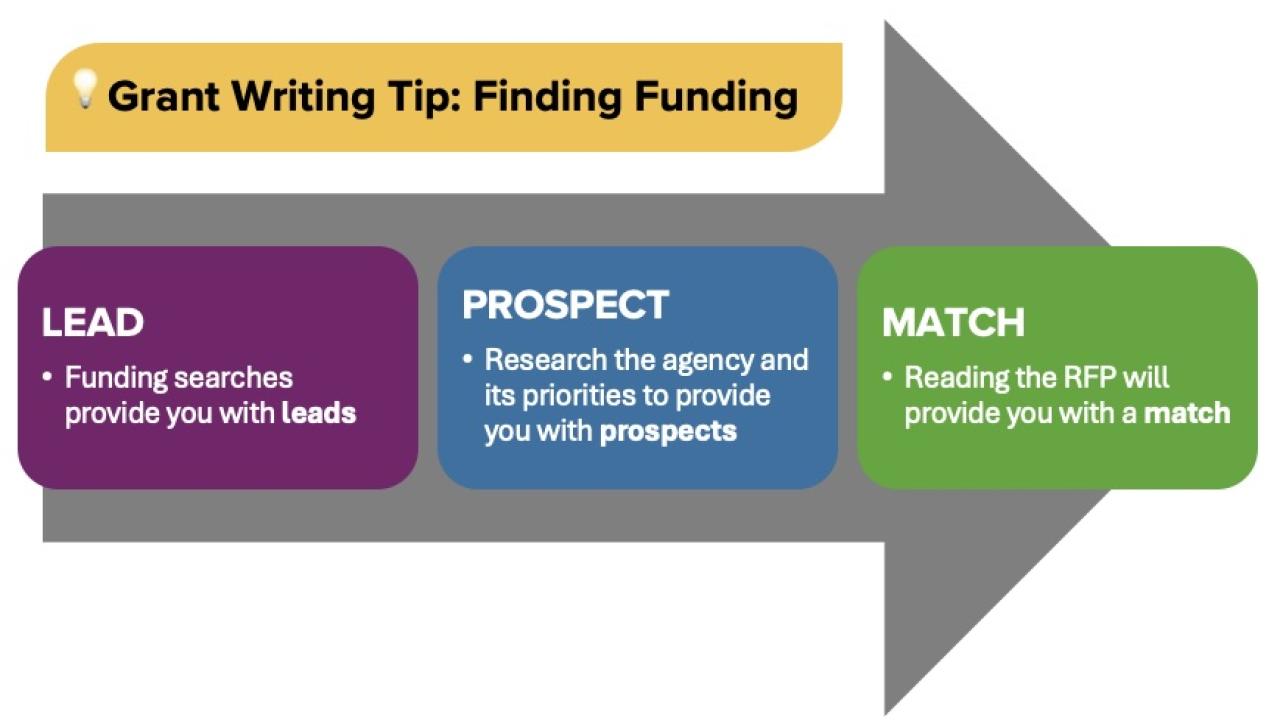
💡 Grant Writing Tip: Finding Funding
One of the most common questions that we get is, “Where do I find funding opportunities?”. For some, the volume of funding agencies and opportunities makes finding a specific call too overwhelming. For others, it may feel like many RFPs don’t quite fit with what you’re looking for. Either way, our team has some tips and tools to help you develop better (and hopefully easier!) strategies for finding funding.
👉 Sign up for newsletters!
The UC Davis Office of Research is lucky to have a great Strategic Initiatives team (Ana Lucia Cordova and Albert Liu) who manage weekly email newsletters with relevant funding opportunities and info about upcoming events. There are targeted lists for early career faculty, the general campus, faculty in the humanities, and those in the social sciences. To sign up, visit: https://lnkd.in/gveTUgxS
👉 Customize a search in Pivot
UCD affiliates have access to Pivot, the largest database for academic funding. In Pivot, you can set up customized funding searches and receive emails with new opportunities that fit your criteria. If you’re not ready to customize a own search, you can also subscribe to one of our already-curated lists! Learn how to use Pivot here: https://lnkd.in/gveTUgxS
👉 Hone your options using Lead → Prospect → Match
Now that you’ve started finding prospective funding opportunities, it’s time to narrow your choices to what is most relevant to you right now. We suggest using a strategy called Lead → Prospect → Match.
Step 1: Lead—Use the funding tools discussed above to conduct a purposefully broad search of funding opportunities, generating a list of 35 or more potential grants you could apply to for your project → These are your LEADS!
Step 2: Prospect—For each lead, review agency mission statements and program summary information. Eliminate opportunities from agencies that don’t fund your work (based on the mission statement) and programs that do not align with your project goals (based on program summary information). Narrow your list to 10-15 opportunities → These are your PROSPECTS!
Step 3: Match - Conduct a close read of each prospect’s RFP. Eliminate those that poorly match your project needs and goals or do not fit your timeline/logistical requirements. Narrow your list to 3-5 funding opportunities best suited to your project → These are your MATCHES!
👉 Key Takeaways
We suggest doing funding searches on a regular basis, as funding needs, agency priorities, and potential opportunities all change over time. By setting up curated searches in Pivot and signing up for email newsletters, you can keep up with the funding landscape without doing a lot of extra work. Then, when you’re ready, use Lead → Prospect → Match to vet potential funding and get writing!